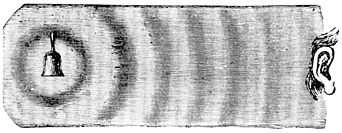Isotropic radiator

An isotropic radiator is a theoretical point source of electromagnetic or sound waves which radiates the same intensity of radiation in all directions. It has no preferred direction of radiation. It radiates uniformly in all directions over a sphere centred on the source. Isotropic radiators are used as reference radiators with which other sources are compared.
Whether a radiator is isotropic is independent of whether it obeys Lambert's law. As radiators, a spherical black body is both, a flat black body is Lambertian but not isotropic, a flat chrome sheet is neither, and by symmetry the Sun is isotropic, but not Lambertian on account of limb darkening.
Physics
A point radiation or sound source. At a distance, the sun is an isotropic radiator of electromagnetic radiation. The Big Bang is another example of an isotropic radiator - the Cosmic Microwave Background.[1]
Antenna theory
In antenna theory, an isotropic antenna is a hypothetical antenna radiating the same intensity of radio waves in all directions. It thus is said to have a directivity of 0 dBi (dB relative to isotropic) in all directions.
In reality, a coherent isotropic radiator of linear polarization can be shown to be impossible. Its radiation field could not be consistent with the Helmholtz wave equation (derived from Maxwell's equations) in all directions simultaneously. Consider a large sphere surrounding the hypothetical point source, so that at that radius the wave over a reasonable area is essentially planar. The electric (and magnetic) field of a plane wave in free space is always perpendicular to the direction of propagation of the wave. So the electric field would have to be tangent to the surface of the sphere everywhere, and continuous along that surface. However the hairy ball theorem shows that a continuous vector field tangent to the surface of a sphere must fall to zero at one or more points on the sphere, which is inconsistent with the assumption of an isotropic radiator with linear polarization.
Incoherent isotropic radiators are possible and do not violate Maxwell's equations. Sound waves can also expand uniformly in all directions, because sound waves in a gas (or liquid) are longitudinal waves and not transverse waves.
Even though an isotropic antenna cannot exist in practice, antenna directivity is usually compared to the directivity of an ideal isotropic radiator, because an antenna's power gain (which expresses the antenna's directivity multiplied by the antenna efficiency) relative to an isotropic radiator is intuitively understood, and is used, for instance, in the Friis transmission equation. For a lossless antenna (antenna efficiency of 100%), the gain averaged over all directions is unity.
Isotropic receiver
In EMF measurements applications, an isotropic receiver (also called isotropic antenna) is a field measurement instrument which allows to obtain the total field independently of the tri-axial orthogonal arrangement chosen for orientation of the device itself.
In practice a quasi-ideal isotropic receiver is obtained with three orthogonal sensing devices with a radiation diagram of the omnidirectional type  , like that of short dipole and small loop antennas.
, like that of short dipole and small loop antennas.
The parameter used to define accuracy in the measurements is called isotropic deviation.
Optics
A point source of light. The sun approximates an isotropic radiator of light. Certain munitions such as flares and chaff have isotropic radiator properties.
Sound
An isotropic radiator is a theoretical perfect speaker exhibiting equal sound volume in all directions.
See also
References
External links
- Isotropic Radiators, Matzner and McDonald, arXiv Antennas
- Antennas D.Jefferies
- isotropic radiator AMS Glossary
- U.S. Patent 4,130,023 - Method and apparatus for testing and evaluating loudspeaker performance
- Non Lethal Concepts - Implications for Air Force Intelligence Published Aerospace Power Journal, Winter 1994
- Glossary
- Cosmic Microwave Background - Introduction
- Isotropic Radiators Holon Academic Institute of Technology